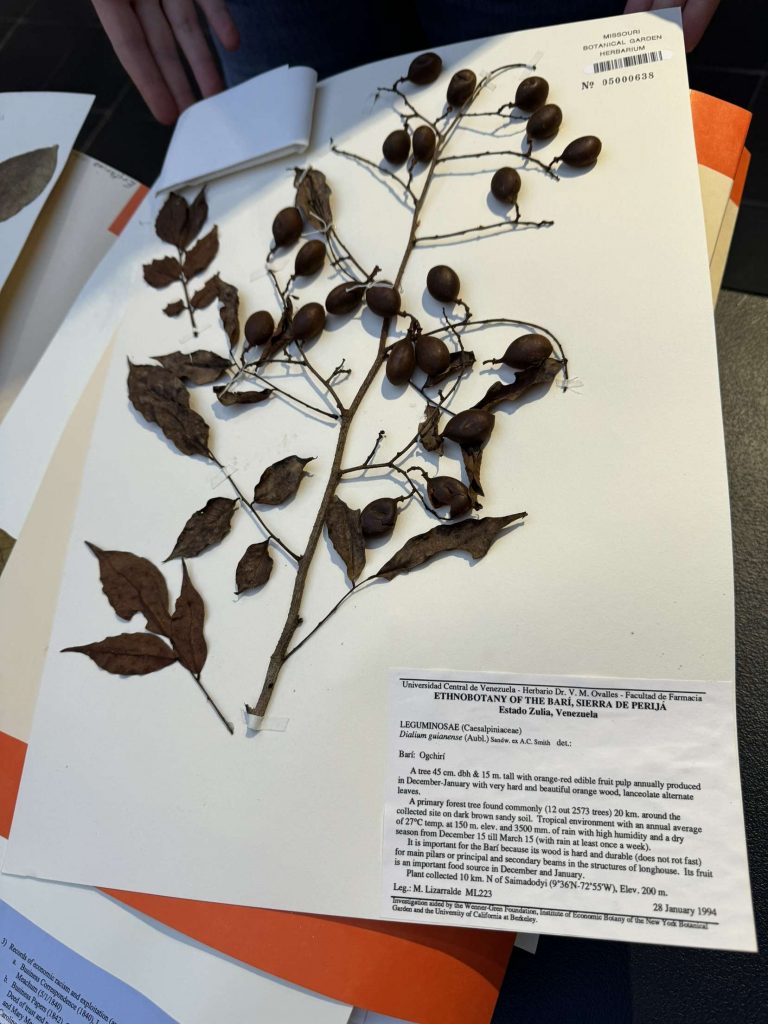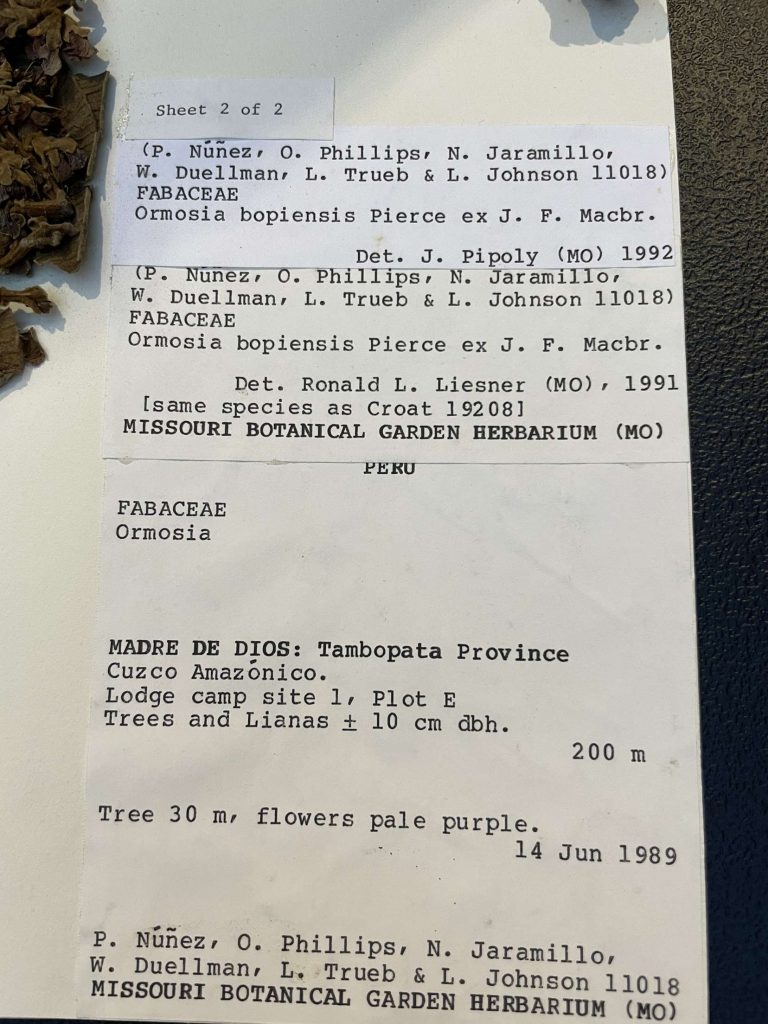The Missouri Botanical Gardens (MOBOT) allowed the CODES cohort to take a deep dive into their herbarium archive to fully understand the biases that may be present in the specimens that are in MOBOT’s herbarium.
These plant specimens that are some seven million in MOBOT’s herbarium all possess the following: barcode, list of location, genus name, species name, local name, and accessioning number (is a special code to look up a specific plant withing the Tropicos database)
In my group within the research team we were given plant specimens mostly from Central and South America, as those regions of the world typically are helped by the local people(s) of that region to help the botanist(s) when they travel to South America to help with the language barrier and the insight knowledge these local botanists would have on the plants located in their own region. There was nothing in particular that stood out about the way the plants were presented within the folder.


The loudest voices within the collection of these Indigenous plants would be the botanist that collected the plant originally. The bias the original botanists possesses can become prevalent within the description of the plant and/or additional notes that might not appear on the databased information that is available on Tropicos.
There were no voices that had been silenced within the plant description itself solely based on the fact that local botanists assist with any plant that is collected in that local botanist’s area of expertise. The document tags only take a snapshot into the time that the plant was sampled, and it doesn’t show all sides of the story. It’s not like there was a livestream to witness the full interaction of the plant collection. Since the whole moment can’t be processed into words on a plant data collection sheet, this gives examples of a problem of what others might think about the original collector’s opinions.
Following the guest lecture from Dr. Tisha Brooks in CODE 123, the thought process of what to do with the information we received from our garden partners only opens my mind to what all could be done with the few gaps that are present in the specimens. What we found in our archive dive can be the starting building blocks for our further research.
Leave a Reply